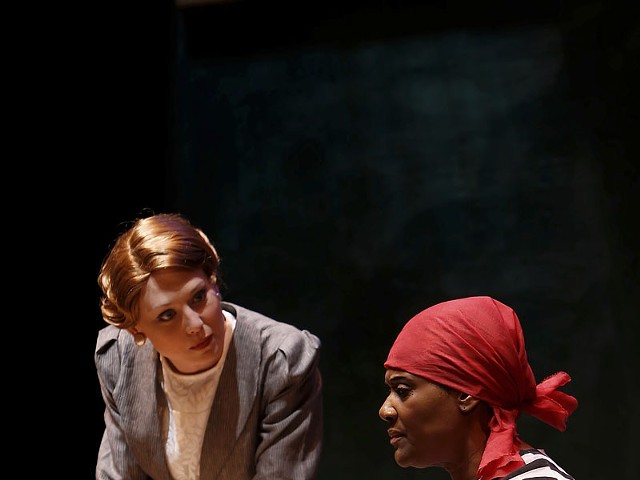Featured Art Review: Georges Rouault: Miserere et Guerre This bifurcated suite of 58 etchings by the anomalous French Catholic artist George Rouault — the title loosely translates as "Mercy and War" — was created between 1914 and 1927, during World War I and its aftermath. They're once again on view, testing the durability of their impact and their consideration as the masterwork of their maker. Formerly a stained-glass artisan, Rouault employs a heavy black outline that, when liberated from metal and glass, wavers with crude sincerity and expressive imprecision. The figures in this series — often depicted in intimate or solitary groups against depthless backdrops — are saturated in deep, sooty tones of a sort that only printmaking can create. A liturgical sensibility suffuses the pieces, beyond outright biblical allusions; all subjects appear frozen in mute pantomime of every heavier variety of suffering, their bodies arced in symbolic gestures of penance or endurance of man's plight. While Rouault never fit comfortably in any of the codified artistic movements of his time, it's clear that his influence was felt among German Expressionists — Max Beckmann particularly. That said, Rouault is utterly his own — creating a strange, wrought world of Christ figures, carnival clowns, kings and weary skeletons cloaked in every black shade. Through July 31 at the Museum of Contemporary Religious Art, 3700 West Pine Boulevard (on the Saint Louis University campus); 314-977-7170 or http://mocra.slu.edu. Hours: 11 a.m.-4 p.m. Tue.-Sun.
Featured Art Review: Georges Rouault: Miserere et Guerre
[
{
"name": "GPT - Leaderboard - Inline - Content",
"component": "41932919",
"insertPoint": "5th",
"startingPoint": "3",
"requiredCountToDisplay": "3",
"maxInsertions": 100
}
]





